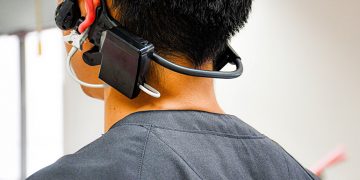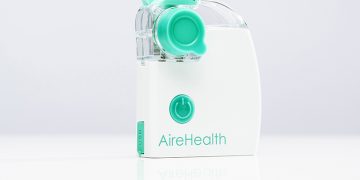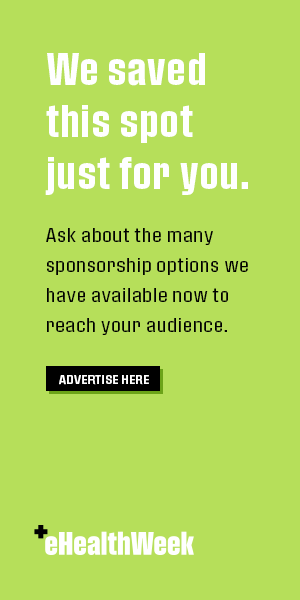Updated at 9:20 ET on June 26, 2020.
Jennifer Nuzzo hopes to send her kids to camp this summer, but like many parents, she’s a little worried about it. The camp she selected for her son requires kids to wear masks, and she thinks he might get overheated. Other than that, though, she sees little problem with kids attending an outdoor camp this summer. And the same goes for schools—most districts haven’t yet announced when and how they’ll resume in-person classes, but she thinks they should open up in the fall.
Nuzzo, an epidemiologist at Johns Hopkins University and a leading expert on the coronavirus, is one of a number of scientists vocally advocating for summer camps and schools to reopen, with some precautions, even if there’s no vaccine yet. “The idea of keeping kids at home, and having parents work at home, for however long, until we get a vaccine,” Nuzzo told me, “it seems to me that there are harms that kids are experiencing that we are not accounting for.”
Some public-health experts say that having in-person classes in a few months is still too risky, citing countries like Israel and China that have had to shut down schools after opening them up. The experts who disagree—call them the “reopeners”—aren’t blind to the dangers of the virus, but they believe the hazards should be weighed against the costs of changing children’s lives so dramatically.
[Read: Closing the schools is not the only option]
This message likely has a friendly ear in many parents, especially those who have been Zooming into meetings while chasing after toddlers. Even parents who have been enjoying the extra family time might be ready for a break. I recently talked by phone with a friend, a father of two, and could hardly make out what he was saying, because he was yawning so much and slurring his words. He was exhausted from homeschooling all day, he said. (I don’t have children, a decision some parents constantly berated me for—until they suspiciously stopped in March.)
But beyond relieving exasperated parents, in-person schooling confers all sorts of societal benefits that students are currently missing. With schools shifted to distance learning, 7 million kids have been stuck at home without the internet they need for their Zoom lessons. Research suggests that some low-income students are losing a year of academic gains. School feeds kids; it socializes them. There are good schools and bad schools, but even the worst ones tend to be better than no school at all.
Apart from the benefits of school, the reopeners point to evidence that children are less affected by the coronavirus than adults are. A recent study in Nature found that children and teenagers are only about half as likely as adults to get infected with the coronavirus. Though the long-term implications of a mild case of COVID-19 are still not known, when kids do get infected, only 21 percent show symptoms, compared with 69 percent of infected adults over 70. In May, some parents worried for their kids’ safety when about 100 children in the U.S. came down with a delayed, severe reaction to the coronavirus called “multisystem inflammatory syndrome.” Reopeners say this disorder has been so rare as to be worth the risk.
While more than 120,000 Americans have died of COVID-19, only about two dozen deaths have been children under the age of 15. Meanwhile, more than 1,700 children die in the United States each year from child abuse and neglect—two issues that have been harder for children to report while they haven’t been seeing teachers regularly.
A major reason schools are reluctant to reopen isn’t just the potential danger to children, but also that to the teachers and parents whom students might infect. Just how likely children are to transmit the virus is still an area of debate, and the stakes are high: If kids are found to pass the virus easily, even though they rarely show symptoms, they might become major spreaders of coronavirus to their communities. According to Nuzzo, and some studies, there’s little evidence that infected kids are as contagious as infected adults. However, Jeffrey Shaman, an epidemiologist at Columbia University, believes that opening up schools and day cares would be risky, pointing to other studies suggesting that kids might indeed serve as vectors, passing the virus onto others in their family as they do with stomach bugs and sniffles. “I haven’t seen enough evidence to convince me that children are less involved in the transmission of COVID-19,” Shaman told me in an email.
Most summer camps have likely already decided whether to open this year. But to the reopening crowd, the call on camp is even easier, since research suggests that the virus is not transmitted as easily outdoors as it is indoors. If camps avoid crowded indoor bunks and dining halls, as well as the potentially contagious toilet clouds in the bathrooms, campers might not have much to worry about. “It’s logical that schools should open in the fall and summer camps, if it’s still possible, should open,” Daniel Halperin, an adjunct professor of public health at the University of North Carolina, told me. “I’m worried about my daughter driving, but I wouldn’t keep her home because there’s a one-out-of-a-million chance that she’s gonna die in a car accident.”
[Read: Summer Is Approaching. Bring Camp Back.]
I pointed out to Halperin that Israel recently reopened schools and then promptly had to close them again when the virus ripped through classrooms. Four children in Israel have developed COVID-19 related heart problems. Halperin—who wasn’t aware of the four children when I interviewed him—seemed unfazed. After all, those infections are cases, he said. Given how rare COVID-19 deaths are in children, “what’s the likelihood that would actually lead to one death in a child?”
Such rhetoric can sound startling at a time when lots of people—health experts in particular—are being cautious about a return to normalcy. And some are less sanguine about just throwing open the schoolhouse gates. In an opinion article he co-authored for JAMA, Josh Sharfstein, the vice dean at the Johns Hopkins Bloomberg School of Public Health, acknowledged the “urgency” of reopening schools, but said it should be done with some modifications. Kids should be kept six feet apart, drop-offs should be staggered, common areas should be closed, and many extracurriculars should be canceled. Oh yeah, and have your teen wear a mask, won’t you? Sharfstein told me he envisions that, to facilitate social distancing, “kids will be in school one day, out of school the next day; in school one week, out of school the next week.”
And even the reopeners want schools to proceed with caution. Teachers who are older or immunocompromised should be given the option to work in different jobs for the time being, several of them told me. Perhaps reopening could start with younger children, who have a greater need for in-person instruction. Maybe schools in hot-spot areas should remain closed. And if kids start getting sick, Jeffrey Klausner, an epidemiologist at UCLA and a reopener, suggested “hitting pause” on school for a few weeks.
The decision of whether to open up schools is going to take a clear-eyed assessment of all the risks. The way Nuzzo sees it, we have to think about not only the societal health benefits of keeping a generation of kids at home for a year, but also the detriment to kids of doing so. And so far, she thinks we’ve been underestimating the detriment part of the equation.
But calculating those risks is precisely what’s been so difficult about the pandemic. Do you let the elderly wither in nursing homes without human contact, or do you risk infecting them? Do you kneecap the economy to encourage people to stay home? If so, for how long? Should you protest? Should you go to church? It’s hard for anyone, including experts, to know exactly what you should do now, let alone how your actions will affect people in months or years. Everyone is staring at a slightly different crystal ball, wondering which path will be the least dangerous. For some scientists, it’s the one that puts kids back in the classroom.














